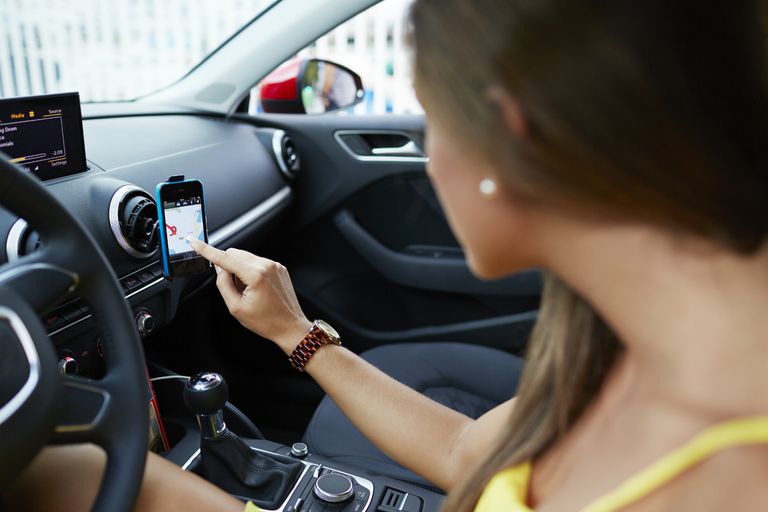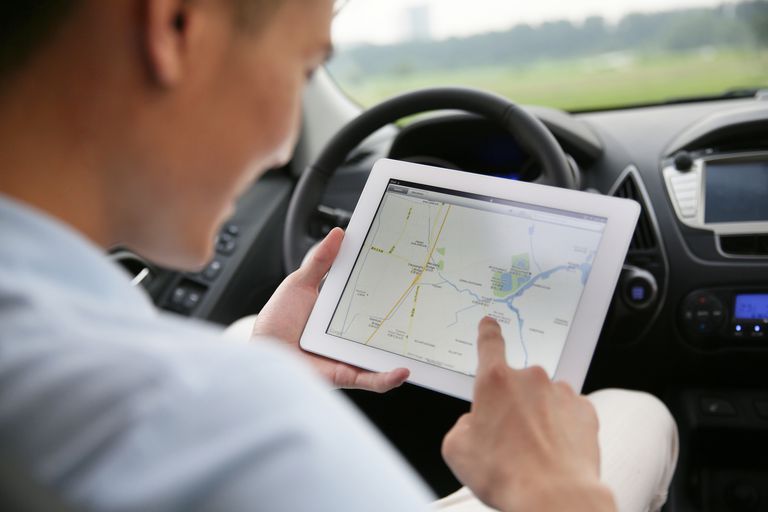Bluetooth and Wi-Fi are similar technologies at the basic conceptual level, but they have very different real-world applications in the car or the home. The primary way to use Bluetooth in a vehicle is to connect the phone to a stereo system, whereas Wi-Fi is typically used to share Internet connectivity with other devices, such as a host or tablet, via phone or hotspot. There is some overlap, which can lead to confusion between the differences between Bluetooth and Wi-Fi, but these technologies are actually very different when you look closely.
Bluetooth knowledge
Bluetooth is a wireless networking protocol that was originally developed to take the place of clunky old network cables. It works by allowing two devices to connect to each other wirelessly via radio frequency transmissions. In fact, it operates in the same 2.4 GHz band used by many non-Bluetooth wireless peripherals like mice and keyboards, some cordless phones, and even some Wi-Fi networks.
The range of a Bluetooth connection is typically given as about 30 feet, but the distance is shorter in most practical situations. Due to this relatively short range, the low power nature of Bluetooth, and other factors, a Bluetooth connection is said to create a personal area network (PAN). This can be contrasted with the type of local area network (LAN) that you can create via Wi-Fi.

Wifi≠Internet
One of the biggest misconceptions about Wi-Fi is that it has anything to do with the Internet.
It’s an easy mistake to make, since the wide proliferation of Wi-Fi means that most people connect to the Internet by connecting to a Wi-Fi network. However, all the Wi-Fi network does is connect one or more computers or devices to a central router and to each other. If that router is connected to the Internet, then the other devices on the network can also access the Internet.It’s an easy mistake to make, since the wide proliferation of Wi-Fi means that most people connect to the Internet by connecting to a Wi-Fi network. However, all the Wi-Fi network does is connect one or more computers or devices to a central router and to each other. If that router is connected to the Internet, then the other devices on the network can also access the Internet.
While Bluetooth is primarily used to connect two devices to each other in a personal area network, Wi-Fi is most commonly used to connect one or more devices to a router. The router allows the devices to share information back and forth just like a wired LAN. Many routers today are built into modems, but they are actually separate devices. In fact, it is possible to use a wireless router to create a Wi-Fi network without any Internet connection involved. In that type of situation, the individual devices can share data with each other, but they can’t access the internet.
There are situations where one or more devices can be connected via Wi-Fi without a router, but they are more complicated to set up. This type of connection is called an ad hoc network, and it essentially allows a Wi-Fi enabled device to connect to one or more other devices without a router. If the device, whether it is a phone, laptop, or otherwise, has an Internet connection, then it is sometimes possible to share that connection.
Wi-Fi operates via radio frequency just like Bluetooth, but the range of a Wi-Fi network will typically be much wider than the range of a Bluetooth connection. Although many Wi-Fi networks use the same 2.4 GHz band as Bluetooth, Wi-Fi uses a lot more power.
In fact, some tests have shown that Bluetooth only uses about 3 percent of the power as Wi-Fi to accomplish similar tasks.

The Difference Between Bluetooth and Wi-Fi
In addition to range and power consumption, Wi-Fi and Bluetooth differ in terms of data transfer speed. Bluetooth is usually much slower, providing less bandwidth than Wi-Fi. This is one of the reasons Bluetooth audio quality is not very good, and Wi-Fi can be used to transmit high-quality music, video content and other data.In addition to range and power consumption, Wi-Fi and Bluetooth differ in terms of data transfer speed. Bluetooth is usually much slower, providing less bandwidth than Wi-Fi. This is one of the reasons Bluetooth audio quality is not very good, and Wi-Fi can be used to transmit high-quality music, video content and other data.
For example, Bluetooth 4.0 offers higher speed than previous versions of the technology. However, Bluetooth 4.0 is still limited to 25Mbps.
The speed of a Wi-Fi network depends on the particular protocol, but even relatively slow Wi-Fi Direct can provide up to 250 Mbps.
While both Bluetooth and Wi-Fi are used to create relatively short-range wireless networks, the most common way to use each is quite different. Because Bluetooth is primarily used to connect two devices to each other over short distances, low power consumption, and personal area networks, it is well suited to automotive use scenarios.
The main way to use Bluetooth in the car is to help with hands-free calling. This can be done by connecting a Bluetooth headset to your phone or you can pair your phone with a compatible host or infotainment system. In some cases, pairing a phone with the host allows you to make and receive calls through the audio system, automatically muting the radio without touching the phone or the stereo volume control.
Bluetooth also provides a very easy way to listen to your digital music collection or transfer music from your phone to services such as Pandora or Spotify. This involves pairing the phone with a Bluetooth-compatible host unit and acting essentially as a wireless auxiliary cable. In some cases, you can even control playback through your host without touching your phone.
Wi-Fi is not usually used for these types of scenarios, but that does not mean that it does not apply to your vehicle.
The main way you can take advantage of this technology in your car is to create a wireless network to share Internet connections or connect multiple devices together. If your phone has sharing capabilities or you have a dedicated wireless hotspot, you can use such networks to provide Internet connectivity to compatible hosts, tablets, portable game consoles, and more.
Will Wi-Fi Replace Bluetooth in Cars?
The fact is that Wi-Fi is superior to Bluetooth in a lot of ways, including both range and speed, and Wi-Fi Direct essentially erases Bluetooth’s primary benefit of convenience. However, none of that really matters in the short term.
The fact is that Bluetooth is already a feature in a lot of OEM and aftermarket head units, and it is also included in virtually every modern smartphone.
Although smartphone technology tends to move and adapt pretty quickly, automotive technology is usually pretty far behind the curve. So even if Wi-Fi Direct did totally replace Bluetooth in other applications, it would probably take a while for that to be reflected in the dash of your new car.
The other issue with Wi-Fi, and Wi-Fi Direct, is power consumption, which will always be an issue for mobile devices. This isn’t as big a deal in automotive applications, where at least some level of extra power is available in most vehicles, but it is a huge deal for phones, MP3 players, and other mobile devices. And Bluetooth is most commonly used in cars to make hands-free calls and stream music, both of which involve a phone, Bluetooth probably isn’t going anywhere any time soon.




